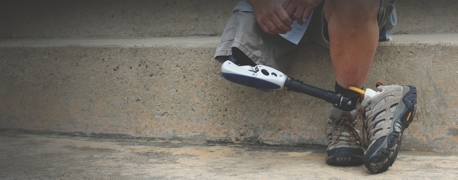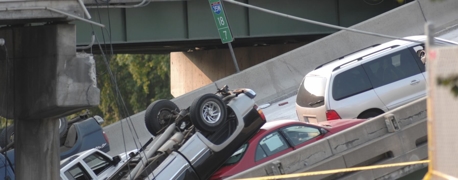Gas Lines, Lax Safety & the Cost to Our Kids
.2112301651550.jpg)
We can’t see them—and we rarely think about them—but natural gas pipelines run beneath nearly every neighborhood in America, silently fueling stoves, water heaters, and furnaces. When they work properly, they’re essential. But when they fail, the results can be catastrophic.
Natural gas-related fires, explosions, and poisonings are tragically common, and children are often the ones who suffer the most. Worse still, these incidents are not truly “accidental.” Far too often, they are the result of unaddressed leaks, missed inspections, or aging pipes left to corrode.
According to the most recent data, there are nearly 16,000 structure fires each year in which the first source of ignition is a flammable gas. Most of these incidents begin with one thing: a leak. That leak may be invisible and, sometimes, odorless. It may be just beneath the surface of a front yard. And too often, the people in danger—homeowners, families, and kids—never see it coming.
In this article, we explore how the aging state of America’s natural gas infrastructure is putting families at risk, why oversight still varies drastically from state to state, and what you can do to better protect yourself and your loved ones. Most importantly, we’ll look at who should be held accountable when someone is injured or killed in an explosion that should never have happened.
A Hidden Danger: Natural Gas & the Risk of Explosion
Natural gas is widely used in American homes because it's efficient, reliable, and cost-effective—but its convenience comes with serious risks, especially for families with young children. One of the most dangerous things about natural gas is how difficult it can be to detect. It’s invisible. It doesn’t smell. It doesn’t make noise. It can be leaking into a home or yard for hours or even days without anyone realizing it. That’s why utility companies are required to add mercaptan, a sulfur-based compound, to give natural gas its distinct rotten egg odor. But even that isn’t a failsafe.
People with diminished senses of smell, including children and older adults, may not detect it. And in enclosed or ventilated spaces, the smell may not be noticeable at all. In fact, there have been numerous reports of gas leaks leading to fires and explosions where there was no noticeable smell of gas. The risk of a tragedy remains—quiet, colorless, and waiting for a spark.
From 2018 to 2022, an estimated 15,941 reported structure fires per year involved a flammable gas as the first item ignited. According to the National Fire Protection Association (NFPA), these fires caused an average of 191 civilian deaths, 747 civilian injuries, and $402 million in direct property damage annually. Of those, 10,774 fires occurred in homes, with the remaining 5,166 in non-residential structures.
How do these fires typically start? The answer is simple: with a leak.
Natural Gas Leaks Are Common—and Deadly
Natural gas leaks can occur for a variety of reasons: corrosion in aging pipelines, faulty installation, shifting soil, poorly maintained appliances, or damage during construction. Once leaked gas builds up in an enclosed space—whether that’s a utility closet, a kitchen, or even an underground pipe outside—a single ignition source is all it takes to trigger an explosion.
Those sources are everywhere:
- Pilot lights
- Static electricity
- Electrical systems, such as light switches
- Gas-powered appliances
In the presence of a natural gas leak, even the smallest spark can be catastrophic. And, because these incidents often happen suddenly and without warning, there is typically very little time to react. As a result, gas-related explosions and fires often turn tragic.
The Alarming Rise in Leaks
Natural gas leaks are becoming more common. Over the past decade, homeowner-reported leaks have climbed sharply, signaling growing risks for families and children.
According to recent data, gas pipeline leaks are on the rise. On average, there is one pipeline incident in the U.S. every 40 hours. Between 2010 and late 2021, the U.S. experienced nearly 2,600 gas pipeline incidents serious enough to require federal reporting. Of those, 328 involved explosions, resulting in 122 fatalities and injuries to more than 600 people.
And yet, the scope of the problem appears to be far greater than what federal data captures. A 2020 study found that America’s local gas distribution systems may harbor over 500,000 active leaks, with total emissions estimated to be five times higher than the Environmental Protection Agency’s official figures. This suggests that countless small leaks—many occurring in residential neighborhoods—go undetected or unreported, putting families at risk without their knowledge.
Common Causes of Natural Gas Leaks
Leaks often result from aging infrastructure and environmental wear. Key culprits include:
- Corroded or deteriorating pipes, especially in older residential or commercial gas distribution systems
- Faulty couplings and joints, which can loosen over time or due to subpar installation
- Unintended damage to gas pipelines due to underground excavation, shifting soil, or nearby construction
Research into urban natural gas distribution systems has shown leaks cluster more heavily in older, low-income neighborhoods.
While no one is immune to leak hazards, children are particularly vulnerable. A gas leak near a play area or yard may expose them unknowingly, even before any odor can be detected or alarm sounds. By the time a leak ignites, the delay may be too long. Even before ignition, natural gas (as well as methane and carbon monoxide) poses respiratory risks, especially for babies and young children with still-developing lungs.
How U.S. Gas Safety Standards Fall Short
While federal safety regulations have recently widened their scope, America’s natural gas oversight system remains fragmented and far from comprehensive.
In November 2021, the Pipeline and Hazardous Materials Safety Administration (PHMSA) issued a landmark rule extending federal pipeline safety oversight to more than 400,000 miles of previously unregulated onshore gas gathering pipelines. For the first time, operators must report incidents and file annual safety records under federal law, and high-pressure pipelines designated as “Type C” now face stricter design, inspection, corrosion control, and leak survey requirements.
This rule represents a major step toward modernizing pipeline safety, but, unfortunately, it does not cover the smaller distribution lines that run into neighborhoods and homes. Federal expansion only affects gathering pipelines—typically those between production sites and large transmission systems. In contrast, the smaller local distribution lines that deliver gas directly to homes remain under state and local jurisdiction, with no national safety mandate.
Each state has its own protocol. Some require annual leak surveys, while others do not. Enforcement varies widely, leading to inconsistencies and preventable disasters, especially in older, underserved communities.
Aging Infrastructure & Population Growth Lead to Increased Risk
America’s natural gas network is aging, often failing to keep pace with growing demand. Many distribution systems still rely on corroded, brittle pipe materials installed decades ago.
Investigative reporting and expert analysis highlight the urgency of this serious but little-known situation:
- In north-eastern cities like New York and Boston, researchers found thousands of small, unaddressed natural gas leaks, many in low‑income neighborhoods, despite prior detection efforts.
- National data show that older materials, like cast iron and early steel, are highly susceptible to cracking and corrosion, leading to recurring gas escapes and other safety hazards.
Meanwhile, continued population growth puts pressure on gas networks, accelerating wear and stretching utility budgets thin. City and utility reconstruction efforts lag behind the lifecycle of the infrastructure, leaving many neighborhoods—and families—vulnerable.
The result is a patchwork system where safety depends more on where you live than on how diligent utilities must be.
In some states, utilities proactively survey local lines; in others, regular inspections are voluntary and underreported. Without consistent standards, families may be living above decaying pipe that is overdue for replacement without ever knowing it.
Why Children Are Especially at Risk From Gas Leaks
Natural gas leaks are dangerous for everyone, but for children, the risks are especially severe. Their developing bodies, faster breathing rates, and limited ability to recognize danger make them far more vulnerable to the effects of gas-related incidents.
Children inhale more air per pound of body weight than adults, which means they may absorb a greater dose of harmful substances, such as carbon monoxide (CO), a byproduct of natural gas combustion that can accumulate silently when appliances malfunction. CO exposure can lead to headaches, dizziness, confusion, unconsciousness, and, in extreme cases, death. Even at lower levels, it can cause developmental harm in young children.
Additionally, natural gas is colorless and odorless. While companies add a sulfur-like odorant (mercaptan) to help people detect leaks, children (especially toddlers and babies) may not recognize the smell or understand its significance. They may also be unable to leave an affected area, call for help, or avoid unsafe appliances. When explosions or fires occur, children are also less likely to escape quickly due to slower reaction times, dependence on adults for evacuation, and limited understanding of emergency procedures.
The Effects of Chronic Gas Exposure
Beyond the immediate risk of fire or asphyxiation, prolonged low-level exposure to gas and its byproducts can contribute to long-term health problems in both adults and children.
In children, these effects can include:
- Respiratory issues, like asthma or chronic cough
- Headaches, fatigue, and nausea
- Neurological symptoms and developmental delays
- Poor academic performance due to chronic illness or missed school
Pediatricians and child safety experts warn that these symptoms are often mistaken for unrelated illnesses, causing delays in identifying gas leaks in homes and schools.
Protecting Children From Natural Gas Is a Community Responsibility
Protecting children from natural gas dangers isn’t just a family concern; it’s a public health responsibility. School buildings, daycare centers, and playground-adjacent infrastructure often rely on aging natural gas systems. Yet many states do not require regular leak surveys in public facilities, nor do they mandate gas line upgrades in residential areas, even those with documented hazards.
Children should not have to live or learn near leaking pipelines. Every delay in addressing outdated infrastructure puts their lives at risk.
How Families Can Help Prevent Gas-Related Disasters
Families should not have to carry the burden of preventing natural gas disasters alone, but there are steps that can significantly reduce the risk at home. The following checklist empowers parents, renters, and homeowners to take proactive measures while continuing to demand accountability from gas utilities and public officials.
Here’s what you can do right now.
1. Ask About Your Local Area’s Leak Survey History
Contact your utility provider or local public service commission’s consumer advocate office and ask when the last gas leak survey was conducted for your area or property. If you rent, your landlord should be able to provide this information or request it on your behalf.
2. Report Any Suspicious Odors
The first warning sign of a gas leak is a distinctive rotten egg smell due to the added mercaptan. If you notice this smell in or around your home, report it immediately, even if it seems faint or fleeting. Never assume someone else will report a gas leak. In some explosion cases, neighbors had noticed gas smells multiple times before disaster struck.
3. Know the Other Warning Signs
Aside from odor, signs of a potential gas leak include:
- Dead or discolored vegetation near a gas line
- Hissing or blowing sounds near pipes or appliances
- Bubbling water in yards or streets
- Unexplained dizziness, headaches, or fatigue indoors
4. Inspect or Replace Faulty Appliances & Fixtures
It’s important to have all gas appliances inspected regularly by a qualified technician. Replace or repair corroded or defective gas couplings or joints, appliances that are improperly vented or show signs of soot buildup, and pilot lights that go out frequently.
5. Be Aware of Underground Work
Before digging in your yard—or even scheduling landscaping or fence installation—call 811 to locate underground utility lines. Accidental strikes on gas pipelines during construction are a leading cause of leaks and explosions.
6. Install Carbon Monoxide Detectors in Your Home
Every home with gas appliances should have working CO detectors near bedrooms and living spaces. These detectors can alert you to the presence of deadly gas buildup that has no smell or visible sign.
7. Advocate for Safer Infrastructure
While there are things you can do to help reduce the dangers of natural gas leaks, old and outdated infrastructure isn’t always something you can control. Keeping families safe is a broader responsibility, one that utility providers and local governments must take on.
City councils and public utility boards should adopt mandatory annual leak surveys. When these surveys indicate concerns, prompt repairs must be made. At the state and federal levels, legislative efforts should be aimed at increasing inspections, transparency, and the replacement of aging pipelines. In schools and other public spaces, facilities should receive regular gas leak inspections and modern infrastructure to support safer environments for our children.
These things are not optional.
While individual steps are powerful, they’re no substitute for systemic change. Families can only do so much. The real responsibility lies with the utilities, landlords, school systems, city officials, and regulators who oversee the safety of our gas infrastructure. When they fail to act or cut corners, the consequences can be deadly.
Holding the Right People Accountable
Parents can take important steps to reduce the risk of gas-related accidents, but the ultimate responsibility lies with those in power: the utility companies, landlords, regulators, and public officials tasked with ensuring safe infrastructure. When these parties fail to meet their obligations, families are often the ones left to suffer the consequences.
The reality is that gas explosions and leaks are rarely random. In many cases, they're the result of:
- Neglected inspections
- Aged, corroded pipelines
- Ignored warnings from residents
- Substandard repairs or no repairs at all
- Failure to replace outdated infrastructure
When disaster strikes, families may be left with destroyed homes, life-altering injuries, or the unimaginable loss of a child. These tragedies are preventable.
Systemic Accountability Means Better Accident Prevention
Preventing the next disaster isn’t just about fixing a pipe or replacing an appliance. It’s about demanding a system that works, one where gas companies are required to inspect and replace aging lines, where cities enforce consistent safety standards, and where no parent has to wonder if their child’s school or home is sitting on top of a ticking time bomb. Parents shouldn’t have to be pipeline experts or utility watchdogs to keep their children safe. But the reality is, natural gas infrastructure in the U.S. is aging, unevenly regulated, and all too often overlooked—until something goes wrong.
That’s why awareness matters. By learning the signs of danger, asking the right questions, and demanding accountability from utilities, landlords, and public officials, families can help prevent the next tragedy before it happens.
You don’t have to do it all at once. Start with one or two small steps. Call your local utility and ask when your home’s last leak survey was performed. Inspect your gas appliances for wear or corrosion. Report that strange gas smell down the street—it could save lives.
Every repaired line, updated pipe, and answered question is a small act of protection. And when parents, advocates, and attorneys work together to expose negligence and demand better, those small acts add up to something powerful: a safer future for every child.
Resources
Gas Safety & Reporting
- National Pipeline Mapping System (NPMS)
Search for gas transmission and hazardous liquid pipelines in your area.
https://www.npms.phmsa.dot.gov/ - Call 811 Before You Dig
A national service to prevent gas line damage during excavation.
https://call811.com/ - PHMSA Pipeline Incident Reports
Search federally reported pipeline incidents by year and location.
https://www.phmsa.dot.gov/data-and-statistics/pipeline/pipeline-incident-20-year-trends
Home & Family Safety
- U.S. Consumer Product Safety Commission – Gas Appliance Safety Tips
https://www.cpsc.gov/Safety-Education/Safety-Guides/Home/Gas-Appliances - Environmental Defense Fund – Methane & Gas Leaks
In-depth research and resources on gas infrastructure and leaks.
https://www.edf.org/climate/methane-studies
Report Issues or Seek Help
- State Public Utility Commissions
Each state has a commission that handles consumer complaints and utility oversight. Find yours by searching “[state name] Public Utilities Commission” on any search engine. - National Association of Regulatory Utility Commissioners
The NARUC is largely responsible for public utility regulation in the U.S. You can search for individual members via the NARUC member directory. - National Fire Protection Association (NFPA)
Find fire and gas safety education resources on the NFPA’s site.
https://www.nfpa.org/


